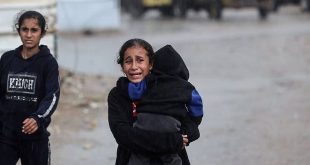Al-Sayyid Muḥammad Bāqir al-Shaftī is a Shiite mujtahid and scholar of fiqh (Islamic jurisprudence) in the Qajari period. He was a prominent scholar of fiqh in his time, and one of the first faqihs who was known with the title “Hujjat al-Islam”. Sayyid Mosque in Isfahan was built with his support and under his supervision.
Born and Family
The lineage of Sayyid Muhammad Baqir b. Sayyid Muhammad Taqi is from Musawi Sadat. He was originally from Rasht. For his knowledge and literary science, he was called Gharawai, Ha’iri and Kazimi and for his birthplace, place of residence and place of burial, he was called ‘Iraqi, Isfahani and Bidabadi.
Sayyid Muhammad Baqir al-Shafti was born in the village of Chirza near Tarom in Zanjan province, north-west of Iran, but years later he immigrated to Shaft (a city in Gilan province, in north of Iran). His father’s name was Sayyid Muhammad Naqi. His lineage goes back to Imam al-Kazim (a) with 21 ancestors. He learned the preliminaries of Islamic disciplines with his father, and then he immigrated to Iraq when he was 17 years old in order to study Islamic disciplines. There he was a student of Sayyid ‘Ali Tabataba’i. He stayed in Karbala for one year, and studied with Wahid Bihbahani.
After one year he went to Najaf, and attended the lectures of Sayyid Mahdi Tabataba’i Burujirdi and Ja’far Kashif al-Ghita’. He stayed in Najaf until 1204/1789, and then he went to Kadhimiya where he attended the lectures of Sayyid Muhsin al-A’raji. In 1205/1790, he went to Qom in Iran, and attended the lctures of Mirza Abu l-Qasim b. Mulla Muhammad Gilani. He then went to Kashan where he attended the lectures of Mulla Mahdi Naraqi, and then in 1216/1801, he went to Isfahan.
His Teachers
- Sayyid Muhammad Naqi Shafti—his father.
- Sayyid ‘Ali Tabataba’i
- Wahid Bihbahani
- Sayyid Muhammad Tabataba’i Burujirdi
- Shaykh Ja’far Kashif al-Ghita’
- Mulla Mahdi Naraqi
- Sayyid Muhsin A’raji
- ‘Allama Bahr al-‘Ulum
His Students
- Shaykh Muhammad Mahdi b. Hajj Muhammad Ibrahim al-Kalbasi
- Mirza Abu al-Qasim b. Sayyid Mahdi Kashani
- Muhammad Ja’far Abadi’i
- Muhammad Shafi’ Japalaqi
- Safar ‘Ali Lahiji
- Mulla Salih Baraghani Qazwini
- Mulla Ja’far Nazarabadi
- Sayyid ‘Ali Tabataba’i Zawari’i (‘Alawiji’i)
- Muhammad Tunikabuni
- Sayyid Muhammad Baqir Khwansari
Social Activity
ujjat al-Islam of the city
Simultaneous with economic developments, the social and political life of Shafti underwent many changes. His insistence on enforcing the laws of shari’a and the support he received from great scholars such as Muhammad Ibrahim Kalbasi and Mulla ‘Ali Nuri gave him a great reputation and he came to be called Hujjat al-Islam (Proof of Islam). Kalbasi, who was a well-known mujtahid, always respected Shafti, he never walked ahead of him, and always called people to listen to him.
Building Sayyid Mosque in Isfahan
Sayyid Mosque in Isfahan was built in Qajar era between 1240/1824 and 1245/1829 by the supports of Sayyid Muhamamd Baqir Shafti Rashti, and is now one of the biggest historical mosques of the city. It is built in an area of 8075 square meters in the Bidabad district of Isfahan, consisting of two large seraglios (shabistan), a place for teaching Islamic disciplines, and over 45 chambers on its top floor for the residence of students of Islamic sciences.
Helping the Poor
It is said that Shafti never deprived anyone of his helps because of their deeds or beliefs. Everyone was endowed with his helps, from merchants and farmers to workers, both Shiite and Sunni.
He was a pioneer for help in natural disasters, such as floods, earthquakes, and epidemic diseases. He donated a lot of money in the cholera of Isfahan, Yazd, Shiraz as well as cholera and plague of Gilan. He also had a bakery and a butcher shop in the city and had given checks to over 1000 poor people in Isfahan to buy their daily shares of bread and meat from those shops.
His Works
- Tuhfa abrar al-mustanbit
- Al-Multaqat min athar al-a’imma al-at’har
- Al-Zuhra al-bariqa fi ahwal al-majaz wa l-haqiqa
- Sharh-u Tahdhib al-usul—a commentary on Tahdhib al-usul by al-‘Allama al-Hilli
- Matla’ al-anwar fi sharh shara’i al-Islam—a commentary on Shara’i al-Islam
- An essay on Mushtaqq (derivative words)
- An essay on the laws concerning doubts and inadvertent omissions in prayers
- An essay on the impermissibility of continuing to follow a mujtahid who has died
- Commentaries on Furu’ al-kafi
- Jawabat al-masa’il (Replies to questions)
Demise
Sayyid Muhammad Baqir passed away on Thursday, Rabi’ I 2, 1260/March 22, 1844 when he was 85 years old. His son, Sayyid Asad Allah, performed prayers on his corpse, and he was buried in the Sayyid Mosque of Isfahan.
 Ijtihad Network Being Wise and Faithful Muslim in the Contemporary World
Ijtihad Network Being Wise and Faithful Muslim in the Contemporary World
